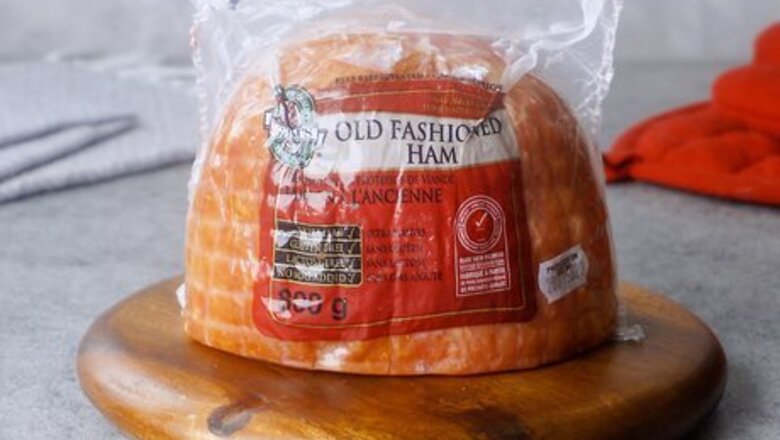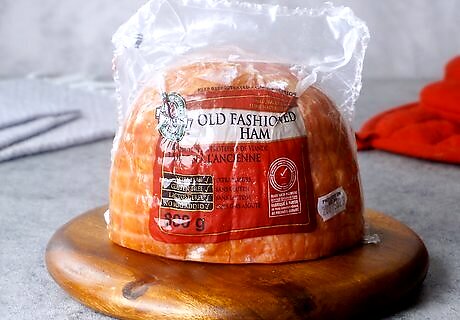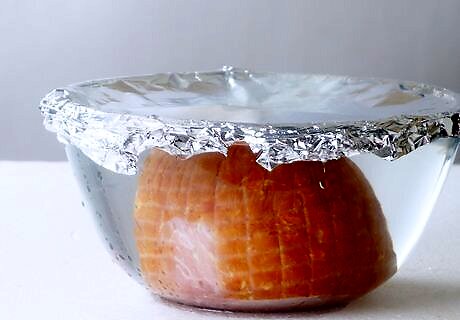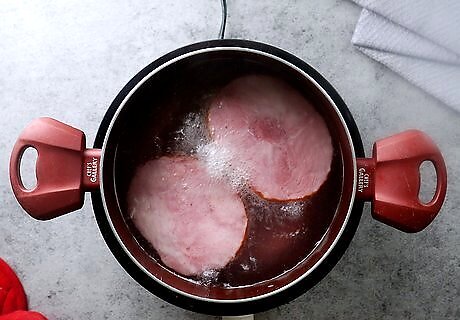
views
Removing Salt from a Ham

Desalt the ham before cooking. If possible, you will want to desalt the ham before you cook it. Whenever possible, try to desalt the ham prior to baking, roasting, or reheating. This will ensure you are able to remove as much of the salt as possible.

Soak it in water. If your ham is too salty, dilution is a great way to remove some of the salty flavor. Take the ham and place it in a container of fresh, cold water. Cover the container with a lid or aluminum foil. Then place the container in the refrigerator for at least 2-4 hours. This will help reduce the saltiness of the ham. You can soak a ham for up to 72 hours to remove the saltiness. The longer you soak it, the less salty it will be. If soaking the ham for more than 4 hours, make sure you change the water regularly. Replace the water every 2 hours to reduce bacteria growth.

Rinse the ham after soaking. After you soak the ham, rinse it with water. Make sure you use fresh, cold water to rinse the ham. Rinse the ham completely. This will help remove any excess salt from the exterior of the ham. You can cook the ham once it is rinsed.

Try boiling the ham. If soaking the ham does not remove the saltiness, you can try boiling it. Cut the ham into large chunks and place the meat in a pot of boiling water. Boil the ham for about ten minutes. This can help leach out any remaining salt. Taste the ham after you have boiled it for about ten minutes. If it is still too salty, try boiling it for another one or two minutes. Do not boil the ham for longer than necessary to remove the salt. Doing so can result in tough, dried out, or unappetizing ham.
Masking the Saltiness

Serve it with dairy products. If your ham turns out to be overly salty, you can diminish some of the saltiness by serving it with dairy products like cheese, sour cream, or cottage cheese. The dairy products will help counteract the salty flavor of the ham. Try chopping up the ham and cooking adding it to scalloped potatoes. Add salty ham to an omelet with cheddar and vegetables for a quick breakfast or lunch.

Add a little lemon juice to cooked ham. Acid can help mask the salty flavor of ham. If your ham is too salty, consider drizzling a little lemon on it to help mask the ham’s saltiness. Make sure you only use a tiny amount and no more than a tablespoon for the entire ham. Rub the lemon juice on the outside of the ham and let it sit for about 15 minutes before serving. You can also try white vinegar to help mask the saltiness. Taste the ham after fifteen minutes. If it is still too salty, allow the vinegar or lemon juice to soak in for another ten to fifteen minutes.

Use less ham in the recipe. If you are dealing with leftover ham that is too salty, you can still make use of it by using less. For example, if you are adding the ham to a soup or stew, use two-thirds of the amount called for in the recipe. This can help cut back on the salty flavor while still allowing you to make the most of your leftovers.




















Comments
0 comment